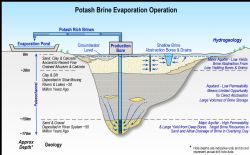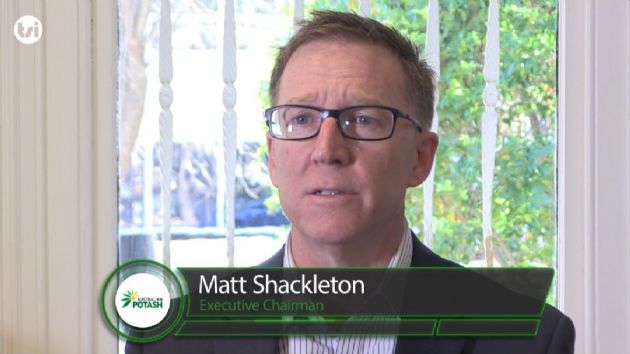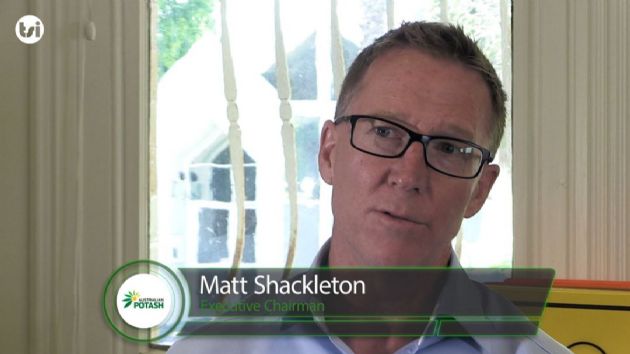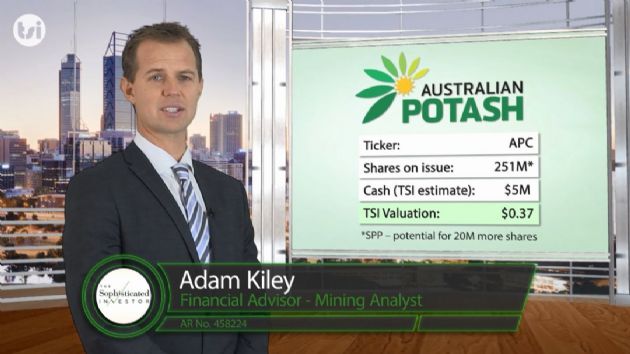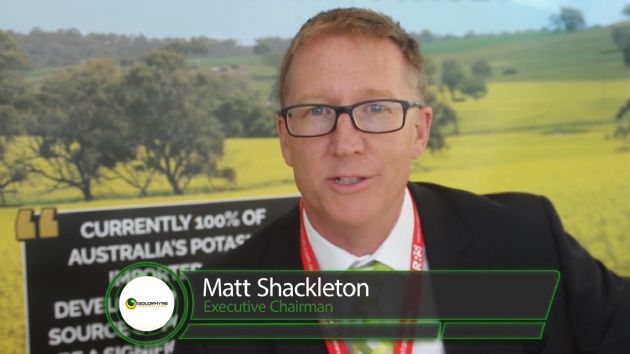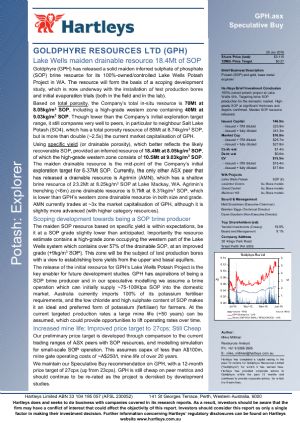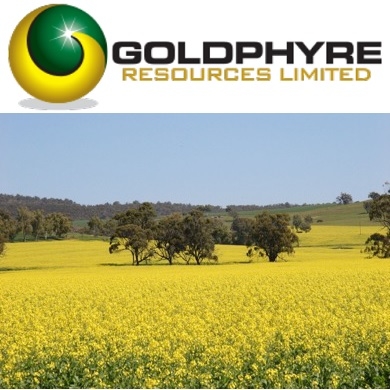
Drilling intersects substantial widths of key basal sands
Perth, April 7, 2016 AEST (ABN Newswire) - Goldphyre Resources Limited ( ASX:GPH) is pleased to advise that it has made a strong start to the Resource drilling program at its Lake Wells Potash Project in WA, with wide intersections of the key basal sands in each of four holes completed to depth.
ASX:GPH) is pleased to advise that it has made a strong start to the Resource drilling program at its Lake Wells Potash Project in WA, with wide intersections of the key basal sands in each of four holes completed to depth.
KEY POINTS
- Four of the planned five-hole program successfully completed to +163m at Lake Wells
- All holes have intersected substantial widths (20m - 50m) of the key basal sands which typically yield the highest volumes of the potash-rich brines, far exceeding expectations
- Drilling program continuing over coming weeks, assays expected in May and maiden Resource set for mid-2016
The basal sand intersections are considered highly significant because it is from this layer of the palaeochannel sediments that Goldphyre is proposing to abstract the largest volumes of the high-grade potash brines confirmed in previous drilling. The mud-rotary and diamond drilling program comprised five holes, with assays expected in May. Further drilling utilising a mud-rotary/air-core drill rig is scheduled out to the end of April. This will ensure Goldphyre is on track to publish a maiden Resource at Lake Wells by the middle of this year.
The interpreted widths of basal sands intersected typically range from 20m to 50m, with down-hole geophysics surveys planned to confirm precise widths. In addition to the basal sands, coarse sand units with widths of between 20m and 40m have been intersected in the upper stratigraphic units. The known drilled depth of the palaeochannel has increased, with four of the five holes ending in basement at 170m, 174m, 163m and 168m. The fifth hole was not completed due to adverse ground conditions, ending at 59m. All holes have been cased.
Goldphyre announced last month that the estimate of total in-situ brine, which is based on extensive seismic and sampling programs, and over 5000m of historic drill data, was 79 - 123 million tonnes of sulphate of potash. However, Goldphyre considers that the Exploration Target based on specific yield of 6 - 37 million tonnes is more relevant. This figure represents the recoverable amount of potash, which in turn is the key figure for use in calculating potential production rates and economic returns.
The potential quantity and grade of the Exploration Target is conceptual in nature. There has not yet been sufficient exploration to estimate a Mineral Resource and it is uncertain if further exploration will result in the estimation of a Mineral Resource.
The Exploration Target is consistent with Goldphyre's strategy to be a 75,000 - 100,000 tonne-a-year, sub-$100m CAPEX sulphate of potash producer.
Goldphyre Executive Chairman Matt Shackleton said the widths of the basal sands recorded in the initial holes were comfortably in line with those used to calculate the Exploration Target.
"We have made a strong start to the drilling program and the widths of the basal sands exceed our expectations and the calculations underpinning our Exploration Target," Mr Shackleton said. "We now await the brine assays to see if they are in line with those returned from previous drilling at Lake Wells."
The current drilling program is being funded in part by a $108,000 grant provided to Goldphyre under the Department of Mines and Petroleum's Exploration Incentive Scheme.
The drill program was designed to test the presence and width of the basal sand layer at the bottom of the palaeochannel sediments because it is from this highly permeable material that the most brine can be recovered. The brine hosts the potash, which is then recovered through an evaporation process.
Figure 1 in link below identifies the various sediments typically found in palaeochannels, and the method Goldphyre is proposing to abstract the brine. Abstraction of brines from palaeochannels is a proven practice in the Australian resources industry, and is relied upon to produce process water for many of the largest iron ore, gold, nickel and copper operations in the eastern goldfields, the Pilbara and other regions of the state.
Goldphyre therefore considers this to be a low risk method of abstracting brines. The palaeochannel clays typically have a permeability of 2%-3%, meaning that only a small fraction of the brines held within them can be extracted. However, the basal sands can have permeabilities of 40%-50% meaning that most of the brines held in the sand layers can be extracted. The more high-permeability material present in the palaeochannel, the more brine can be recovered.
The Lake Wells Potash Project
A drilling program conducted at Lake Wells in July 2015iii identified high-grade potash mineralisation both beneath the lake and the low dune areas surrounding the lake. That drilling program generated wide intercepts of high-grade potash to depths of 135m (down-hole), which was the depth capacity of the drill rig used.
Two passive seismic survey programs have been conducted at the Project. This data permits the clear targeting of drill holes into the deepest parts of the palaeovalley. This coarse, unconsolidated material often has a high permeability, which facilitates drainage of the overlying hydrogeological units.
Goldphyre has commenced a mud-rotary, air-core and diamond drilling program aimed at understanding the basal sand layer and to confirm deep brine chemistry. The Company plans to release a Maiden JORC Resource Estimate in H1 2016.
To view figures, please visit:
http://abnnewswire.net/lnk/61KAF07V
About Australian Potash Ltd
Australian Potash Limited (ASX:APC) is an ASX-listed Sulphate of Potash (SOP) developer. The Company holds a 100% interest in the Lake Wells Potash Project located approximately 500kms northeast of Kalgoorlie, in Western Australia's Eastern Goldfields.
Following the release of a Scoping Study in 2017, APC has been conducting a Definitive Feasibility Study (DFS) into the development of the Lake Wells Potash Project. The Company is aiming to release the findings of the DFS in H2 2019.
The Lake Wells Potash Project is a palaeochannel brine hosted sulphate of potash project. Palaeochannel bore fields supply large volumes of brine to many existing mining operations throughout Western Australia, and this technique is a well understood and proven method for extracting brine. APC will use this technically low-risk and commonly used brine extraction model to further develop a bore-field into the palaeochannel hosting the Lake Wells SOP resource.
A Scoping Study on the Lake Wells Potash Project was completed and released on 23 March 2017. The Scoping Study exceeded expectations and confirmed that the Project's economic and technical aspects are all exceptionally strong, and highlights APC's potential to become a significant long-life, low capital and high margin sulphate of potash (SOP) producer.
| ||
|




